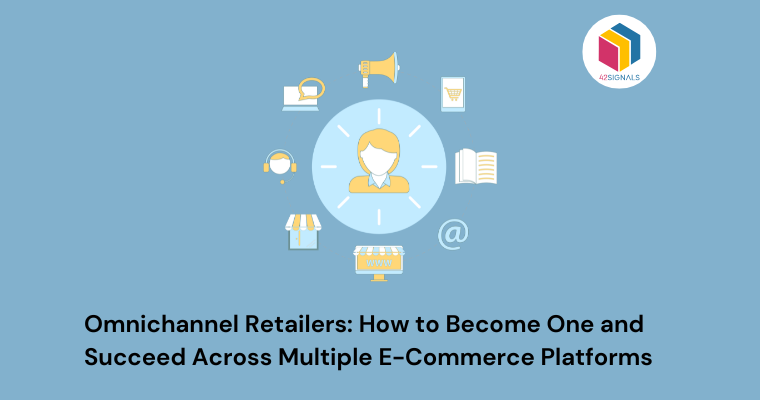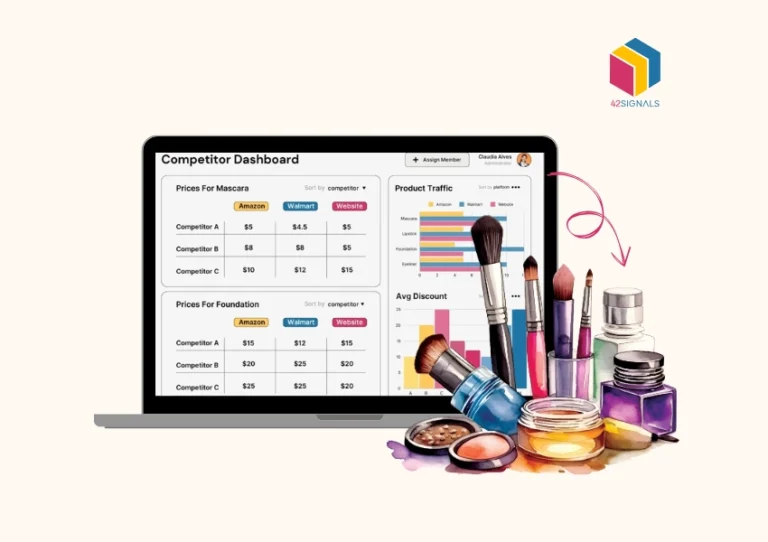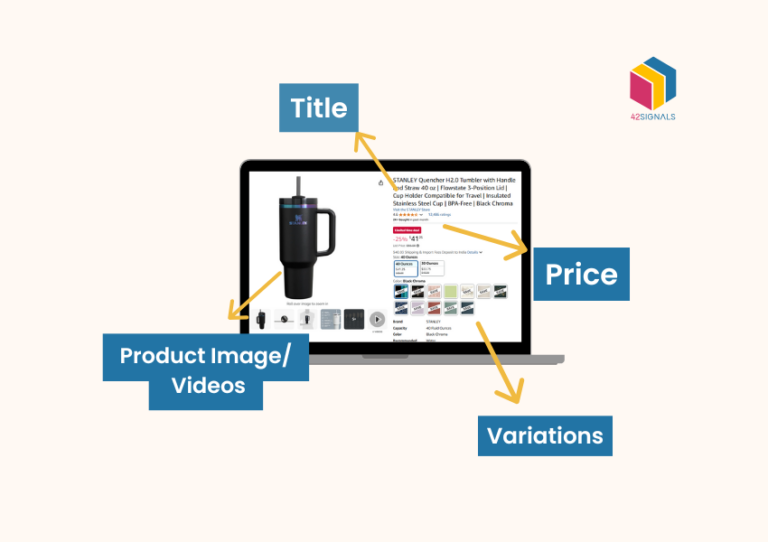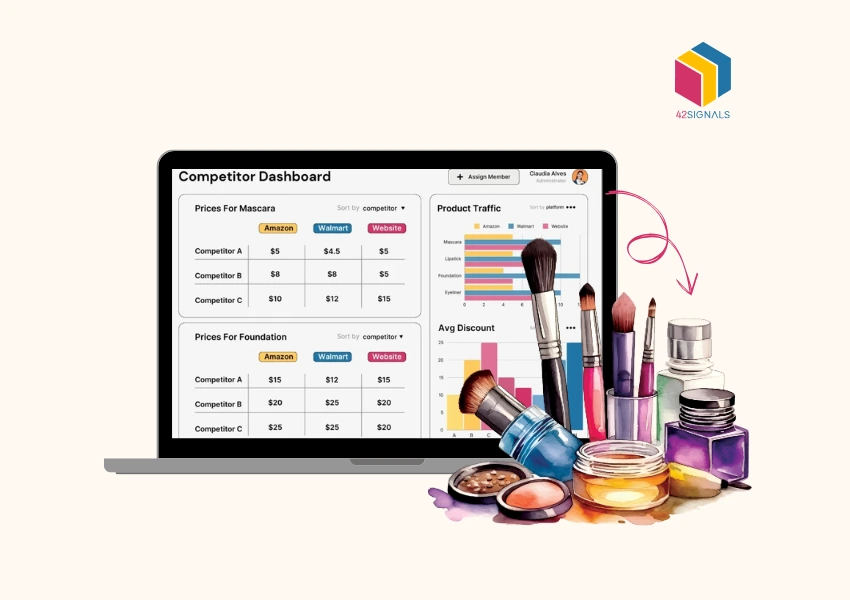What are omnichannel retailers? Let’s understand the basics first.
As consumers increasingly demand seamless shopping experiences across a variety of platforms, retailers must adapt or risk falling behind. The key to thriving in this environment lies in understanding how to become an omnichannel retailer and how to succeed across multiple e-commerce platforms.
Let’s explore the critical steps and strategies needed to embrace omnichannel retailing, leverage omnichannel marketing, utilize digital shelf analytics, and gain valuable e-commerce insights to achieve success.
Omnichannel Retailers | What is Omnichannel Retail?
Omnichannel retail refers to a fully integrated approach to commerce, providing customers with a unified shopping experience across all channels, including online stores, physical stores, mobile apps, social media, and more.
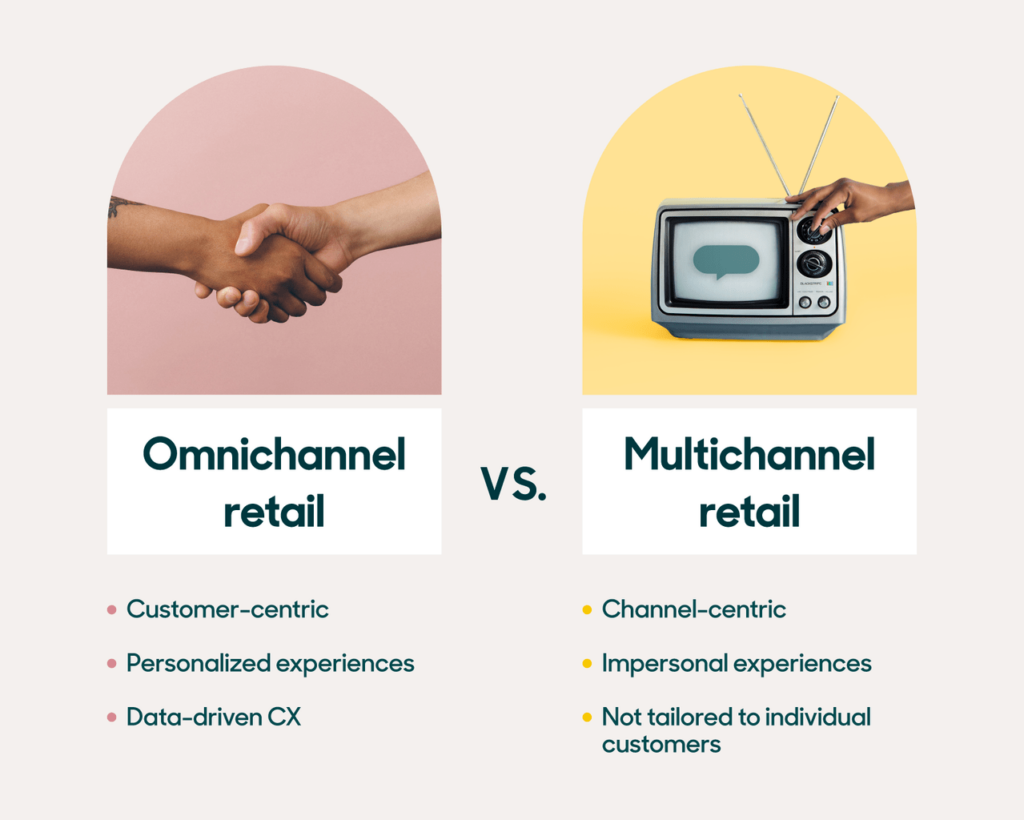
Image Source: Zendesk
Unlike multichannel retail, which simply offers products on multiple platforms, omnichannel retail ensures a seamless experience where each channel is interconnected, allowing customers to transition smoothly between them.
For instance, a customer might browse a product on a retailer’s mobile app, add it to their cart, and then complete the purchase later on a desktop computer. They might also choose to pick up the product from a nearby physical store or have it delivered to their home. In an omnichannel environment, each of these touchpoints is connected, ensuring that the customer’s journey is consistent, convenient, and personalized.
Why Omnichannel Retail Matters?
The importance of omnichannel retail cannot be overstated. Today’s consumers expect flexibility and convenience in their shopping experiences. They want to shop anytime, anywhere, and on any device, with the option to switch between channels without losing continuity.
Research shows that omnichannel shoppers have a 30% higher lifetime value than those who shop using only one channel.
Moreover, the COVID-19 pandemic has accelerated the shift toward omnichannel retailing. With physical stores facing restrictions and consumers spending more time online, the lines between digital and physical shopping have blurred further.
Retailers who had already embraced omnichannel strategies were better positioned to navigate these changes, while those who hadn’t faced significant challenges.
Steps to Becoming Omnichannel Retailers
1. Understand Your Customer Journey
The first step in becoming an omnichannel retailer is to deeply understand your customer journey. This involves mapping out how customers interact with your brand across various touchpoints, from discovery to purchase to post-purchase. Utilize customer data to identify patterns, preferences, and pain points.
E-commerce insights, derived from data analytics, can play a crucial role here. By analyzing how customers behave on different platforms, what products they prefer, and how they make purchasing decisions, retailers can create a more tailored and effective omnichannel strategy.
2. Integrate Your Channels
Integration is at the heart of omnichannel retail. Ensure that all your channels are interconnected, allowing data to flow seamlessly between them. This means unifying your inventory management, customer service, marketing, and sales systems so that they work together harmoniously.

Image Source: Research Gate
For example, if a customer buys a product online and wants to return it in-store, the in-store system should recognize the purchase without any hassle. Similarly, if a product is out of stock in one channel, the customer should be able to purchase it from another channel without any difficulty.
3. Invest in Technology as Omnichannel Retailers
To achieve seamless integration, investing in the right technology is essential. Retailers need robust e-commerce platforms, customer relationship management (CRM) systems, and digital shelf analytics tools to manage their operations effectively.
Digital shelf analytics, in particular, is critical for monitoring how products are displayed and sold across various online channels. It provides insights into product visibility, pricing, and competitor strategies, helping retailers optimize their digital presence and ensure consistency across platforms.
4. Focus on Omnichannel Marketing
Omnichannel marketing is the practice of creating a consistent brand message across all channels while tailoring the message to fit the specific context of each channel. This approach ensures that whether a customer is browsing on social media, searching on Google, or walking into a physical store, they receive a cohesive and relevant experience.
To succeed in omnichannel marketing, retailers need to leverage data to understand customer preferences and behavior. Personalized marketing campaigns that consider the customer’s past interactions with the brand can significantly enhance engagement and conversion rates.
5. Optimize for Mobile
With the growing dominance of mobile commerce, optimizing your omnichannel strategy for mobile devices is imperative. Ensure that your website is mobile-friendly, with responsive design and fast loading times. Mobile apps should be intuitive, offering features such as easy checkout, product recommendations, and location-based services.
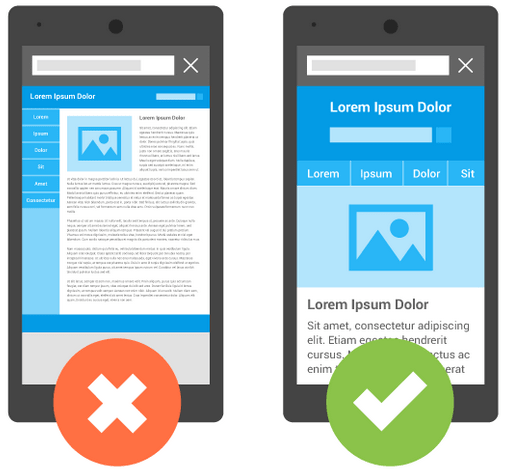
Image Source: Dinarys
Mobile optimization also extends to marketing. Consider how your emails, ads, and social media posts appear on mobile devices and tailor them accordingly. A seamless mobile experience can be a powerful differentiator in the competitive omnichannel retail landscape.
6. Enhance Customer Support as Omnichannel Retailers
Customer support is a critical component of the omnichannel experience. Ensure that customers can access support through their preferred channels, whether it’s live chat on your website, social media messaging, phone, or in-store assistance. Integrating your customer support channels ensures that customer inquiries are handled efficiently, no matter where they come from.
Implementing a unified customer service platform can help track customer interactions across all channels, allowing support agents to provide personalized and context-aware assistance. This level of service not only enhances customer satisfaction but also builds brand loyalty.
7. Leverage Data for Continuous Improvement
Data is the backbone of successful omnichannel retail. By leveraging e-commerce insights, retailers can continuously monitor and refine their strategies. This involves tracking key performance indicators (KPIs) such as conversion rates, customer retention, average order value, and channel-specific metrics.
Digital shelf analytics can provide valuable insights into how products are performing on different platforms, helping retailers adjust their pricing, promotions, and product placements accordingly. Additionally, customer feedback and reviews can offer insights into areas that need improvement, allowing retailers to make data-driven decisions that enhance the overall customer experience.
Challenges of Omnichannel Retailing
While the benefits of omnichannel retailing are clear, it’s important to recognize the challenges as well. One of the biggest challenges is the complexity of managing multiple channels and ensuring a consistent experience across them. This requires significant investment in technology, logistics, and staff training.
Inventory management can also be challenging, as retailers need to ensure that products are available across all channels without overstocking or understocking. Additionally, data privacy and security concerns must be addressed, especially as customers share more personal information across different platforms.
Another challenge is maintaining brand consistency across various channels, particularly when working with third-party platforms or partners. Retailers must ensure that their brand message, pricing, and customer experience remain consistent, even when they don’t have full control over the sales platform.
Success Stories in Omnichannel Retail
Many retailers have successfully implemented omnichannel strategies and reaped the rewards. One notable example is Nike, which has invested heavily in creating a seamless omnichannel experience. By integrating its physical stores, online store, and mobile app, Nike offers customers a unified experience where they can shop, access personalized recommendations, and participate in community events.

Image Source: LinkedIn
Another example is Sephora, which uses digital tools to enhance the in-store experience. Customers can use Sephora’s mobile app to scan products in-store, access product information, and read reviews. Sephora’s loyalty program is also integrated across all channels, allowing customers to earn and redeem points both online and in-store.
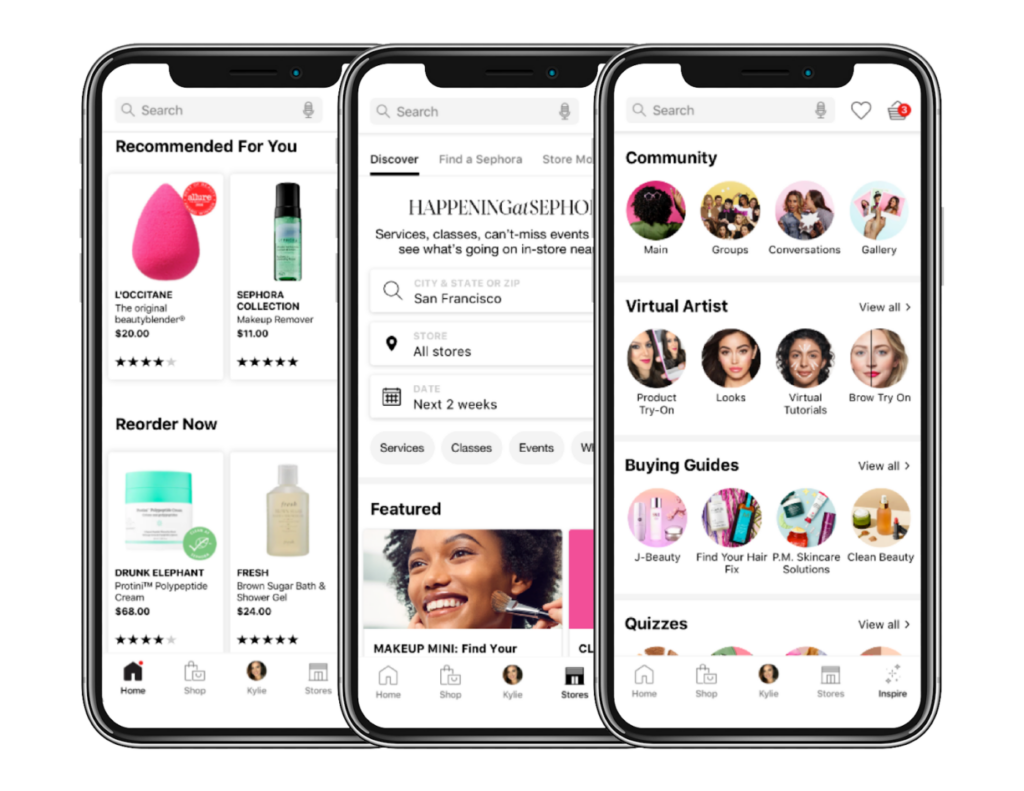
Image Source: Heidi Waiti
These success stories highlight the importance of investing in technology, understanding customer behavior, and creating a seamless experience across all channels.
Conclusion on Omnichannel Retailers
While challenges exist, the potential rewards are significant. Retailers that effectively implement omnichannel strategies can not only meet the demands of modern consumers but also differentiate themselves from competitors, drive higher customer loyalty, and achieve long-term success.
Take your omnichannel strategy to the next level. Explore how 42Signals can empower your business to stand out, boost customer loyalty, and achieve lasting success. Schedule a demo today!
Frequently Asked Questions
What is meant by omnichannel retail?
Omnichannel retail is a seamless shopping experience across multiple channels, integrating online and offline sales. It allows customers to interact with a brand via:
- Physical stores
- E-commerce websites
- Mobile apps
- Social media
- Call centers
- Marketplaces (Amazon, eBay)
The goal is to create a consistent and personalized experience regardless of where or how a customer shops.
How does omnichannel retail work?
Omnichannel retail connects all sales and marketing channels so that:
- A customer can start shopping on a mobile app and complete the purchase in-store.
- A retailer’s inventory is synced across all platforms.
- Customer data is shared across channels to offer personalized recommendations.
What is an example of an omnichannel retailer?
Nike is a leading omnichannel retailer. Customers can:
- Browse online and purchase in-store or via the Nike app.
- Use the Nike+ app to get in-store rewards and personalized recommendations.
- Try “buy online, pick up in-store” (BOPIS) services.
- Get an integrated shopping experience across mobile, website, and physical stores.
What’s the difference between multichannel and omnichannel retail?
- Multichannel retail: Selling through multiple platforms without integration. (E.g., separate online and offline experiences.)
- Omnichannel retail: All platforms are integrated, offering a seamless shopping experience across channels.
Is Costco an omnichannel retailer?
Partially. Costco has both physical warehouse locations and an e-commerce platform, but it lacks full omnichannel integration compared to retailers like Walmart or Target.
- Customers can shop online and in-store, but there is limited integration between the two.
- Costco does not offer buy online, pick up in-store (BOPIS) for most items.
Is Walmart an omnichannel retailer?
Yes! Walmart is one of the best examples of an omnichannel retailer. It offers:
- Walmart+ membership, which integrates online and in-store benefits.
- Buy Online, Pick Up In-Store (BOPIS) and curbside pickup options.
- Walmart Marketplace for third-party sellers, integrated into its website.
- Mobile app with real-time inventory tracking, payment, and loyalty rewards.
